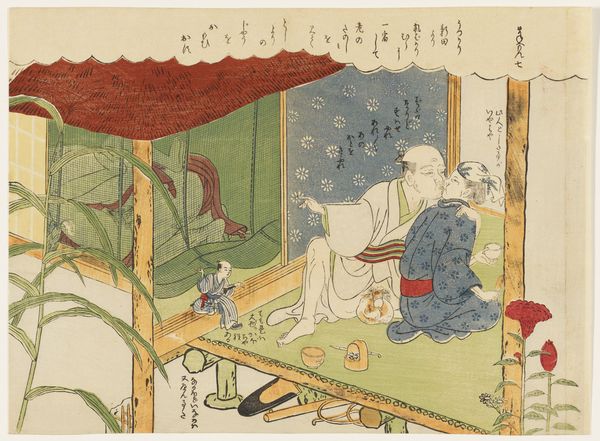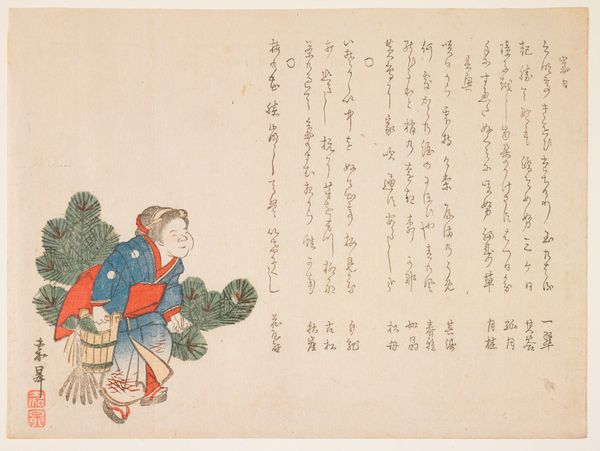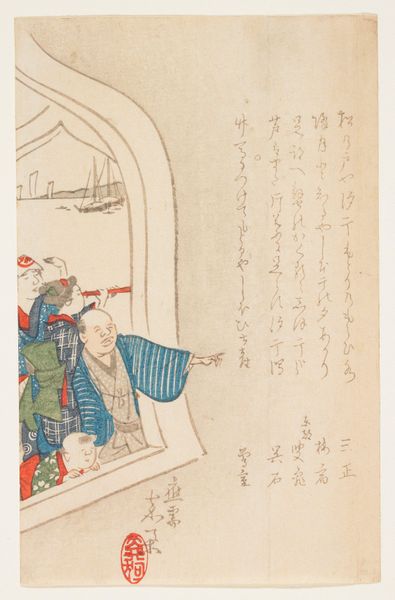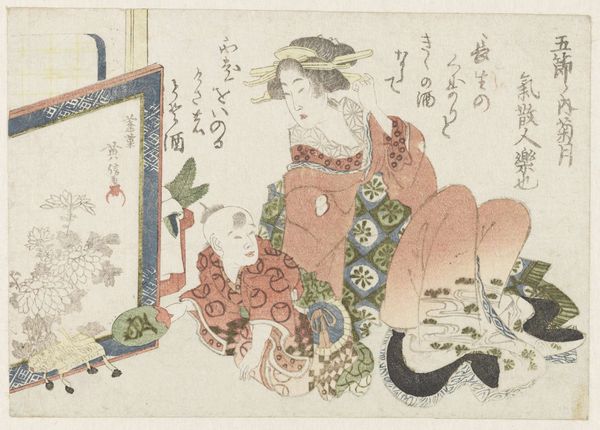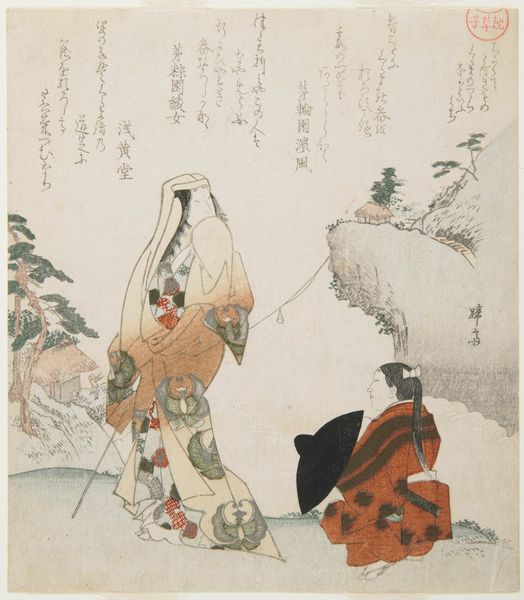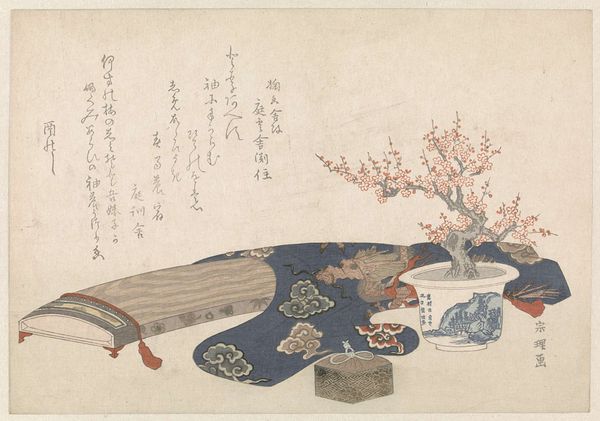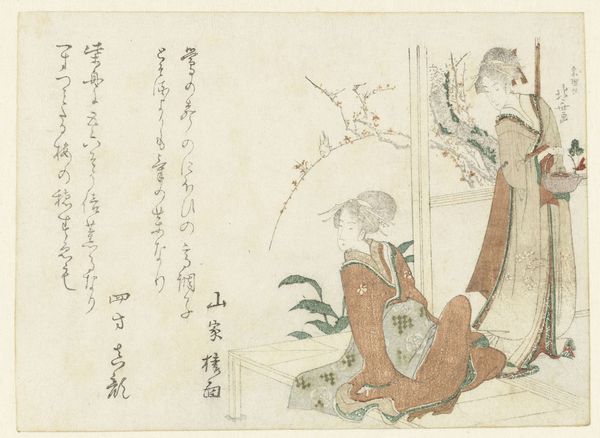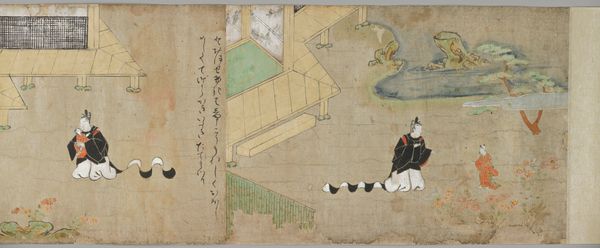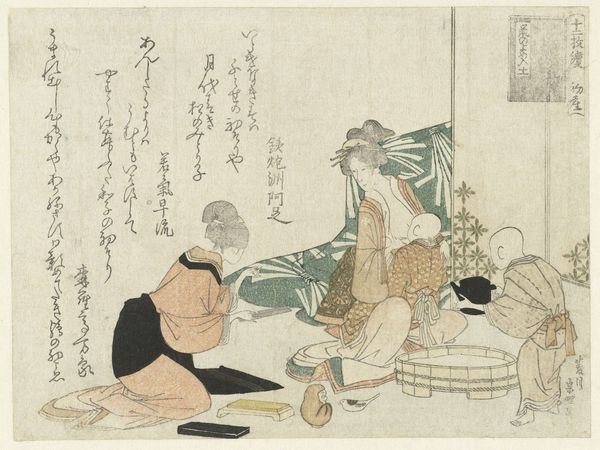
print, watercolor, ink, woodblock-print
#
water colours
# print
#
asian-art
#
landscape
#
ukiyo-e
#
figuration
#
watercolor
#
ink
#
coloured pencil
#
woodblock-print
Dimensions: 7 1/4 x 9 3/4 in. (18.4 x 24.8 cm) (image, sheet)
Copyright: Public Domain
Curator: Let's examine this lovely ukiyo-e print held at the Minneapolis Institute of Art; titled "(New Year's decoration)", it's thought to have been created by Shunshō between 1861 and 1864. Editor: Immediately, I notice this evokes a serene, almost dreamlike state. The muted color palette, coupled with the delicate rendering, invites a quiet contemplation. Curator: Indeed. Shunshō's use of woodblock printing, ink, and watercolor contributes to that feeling. Considering this was a New Year's decoration, the print's materiality speaks volumes about the culture surrounding artisanal print production in 19th-century Japan and its importance in social events. The labor and skill to create such a print… Editor: ...Absolutely. And looking closer, one can decode layers of symbolism woven into this image. Cranes, often representing longevity and good fortune, stand atop the pine tree. The plum blossoms are symbols of renewal and spring. Curator: These images, laden with symbolism, provided potent cultural narratives during the Edo period. New Year’s was (and remains) a crucial event so there must have been a healthy marketplace to justify the use of valuable pigments to make the colored prints. What inks were utilized? How many blocks were employed to make it? Who commissioned the artist? Editor: Precisely. The turtle also appears, nestled along what looks like the sea in the print, continuing this thread of longevity and stability. These repeating motifs point to a deep cultural desire for prosperity. Curator: By the way, aren't those people under the tree... children? Their role can tell us so much about the context of how prints were used within specific households. Editor: I would agree; their presence nestled under the tree adds another dimension, suggesting familial blessings. The poem calligraphically placed in the upper-right, no doubt amplifying those aspirations further. Curator: Understanding the material inputs and economic demands gives valuable insight into artmaking processes, especially woodblock print production during this time. Editor: And yet, by unlocking the significance of the imagery—cranes, plum blossoms, even the calligraphy—we realize the cultural and emotional depth a small print like this carries. It’s far more than just decoration; it's a reservoir of shared beliefs and hopes. Curator: So, the intersection between artisanal craft, cultural significance, and marketplace creates such a vivid and dynamic glimpse into Japanese history through the means of its production. Editor: Seeing how symbols, carefully chosen, continue to resonate, even across centuries, allows for the viewers to form connections to the past that remain both potent and beautiful.
Comments
No comments
Be the first to comment and join the conversation on the ultimate creative platform.
